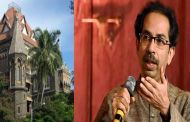Agartala/Aizawl: India would strengthen vigil along its border with Myanmar to check drugs and arms smuggling besides movement of inimical elements, including militants, officials said on Thursday.
“We would further strengthen the security along the India’s border with Myanmar to check smuggling of drugs, arms and other contraband items,” a senior Assam Rifles official told IANS, wishing anonymity.
“The vigil would also be reinforced to stop trans-border movement of extremists and other inimical elements,” the official said.
He said: “It is a tough task to guard the unfenced mountainous borders with a full-proof security. Additional Assam Rifles troopers would also be deployed along the Myanmar borders.”
Four northeastern states – Arunachal Pradesh (520 km), Manipur (398 km), Nagaland (215 km) and Mizoram (510 km) – share 1,643-km unfenced border with Myanmar.
Smuggling of drugs, arms, animal pieces, various contraband goods is rampant across the India-Myanmar border, specially along Mizoram’s border with that country.
According to Mizoram Police, seven AK-47 assault rifles, two AK-56 rifles, six US-made M-16 rifles, four MA-3 Mk-II rifles, two hand grenades, three kg of RDX, around 8,000 rounds of ammunition of different guns and 312 boxes of special and ordinary detonators have been seized by the security forces in Mizoram last year.
“Bulk of the seized arms and ammunition were suspected to have been meant for Chakma militant outfit operating in neighbouring Bangladesh and these were mainly smuggled from Myanmar,” a Mizoram police official said.
Mizoram also shares an unfenced 318 km international border with Bangladesh.
According to intelligence officials, Bangladeshi rebels belonging to the Chakma tribal community – Parbartya Chattagram Jana Samhati Samati (PCJSS) – are involved in the arms smuggling.
PCJSS’s armed wing Shanti Bahini has been demanding sovereign status for tribals in the Chittagong Hill Tracts (CHT) of southeast Bangladesh and had waged guerrilla warfare against Bangladesh for two decades until 1997.
Though the Shanti Bahini had signed an agreement with the Bangladesh government in 1997, a splinter group is still active in the Chittagong Hill Tracts.
IANS
Agartala: The Left-ruled Tripura maintained its top position for the sixth consecutive year by providing 88 person-days’ rural jobs per household under the job guarantee scheme during the 2014-15 fiscal, a Cabinet minister said here on Friday.
“Tripura has been providing the highest average employment for the past six years under the MGNREGS (Mahatma Gandhi National Rural Employment Guarantee Scheme),” Tripura Rural Development Minister Naresh Jamatia told reporters here.
He said: “Tripura provided 88 days of work per household in the just concluded financial year (2014-15) against the national average of 40 person-days.”
“Tripura has maintained the top position in providing rural jobs since 2009-10,” the minister said, citing from the status report of the union rural development ministry.
According to the report, Maharashtra came second with 53 person-days per household, followed by Andhra Pradesh with 47 person-days, Rajasthan with 45.71 and Meghalaya with 46.42 person-days.
The National Rural Employment Guarantee Act (NREGA) mandates 100 days of employment in a financial year to at least one member of each rural household in the state.
According to the central government performance report on the MGNREGS, of the total of 249,542 panchayats across the country, 33,670 panchayats did not provide any job to any worker.
These 33,670 panchayats are mostly in Maharashtra, Punjab, Gujarat, Haryana, Uttar Pradesh, Chhattisgarh and Uttarakhand.
The minister said the central government at a very short notice from April 1 introduced the Public Financial Management System (PFMS) to make the monetary system — from fund allocation by the union and state governments to payment to labourers revoking the previous e-FMS (Electronic Fund Management System).
“Though both the systems are transparent, hassle and error-free and paperless besides eliminating administrative delays and we support the new system too, the PFMS was introduced in less than a week’s notice, creating problems in some blocks to disburse the wage payments to the workers,” Jamatia added.
Tripura is providing wages to the MGNREGS workers at their doorstep through business correspondents engaged by various nationalised and regional rural banks, he said.
Besides providing rural jobs, the MGNREGS has created rural assets that include household latrines, drinking water sources, rural road connectivity, livestock promotion, pisciculture, watershed management and afforestation, securing livelihood activities.
IANS
Mumbai: In an attempt to curb child labour, the Maharashtra government, along with a non-governmental organisation, helped reunite 65 rescued children with their families.
The children were rescued from various establishments last month and sent to shelter homes in a joint operation of the NGO and the state government.
“I came here to work… I came here on my own… (was working) in Dharavi… from 10 am to 10 pm,” said a rescued child, Satish Kumar, adding, “I am feeling happy to go back home.”
Of the 65, parents of 10 rescued children, picked up their wards from the shelter homes, while the rest were sent to their homes on a special coach of Rajendra Nagar Superfast Express.
“Initially we used to rescue around 500 children yearly but now it has come down because these children are sent back to parents who now know that child labour is a crime,” said state Minister For Women and Child Development, Vidya Thakur.
ANI
Mumbai: After having renamed Bombay as Mumbai during its rule in Maharashtra between 1995-99, Shiv Sena, which is sharing power with BJP in both state and the Centre, is now vehemently pressing for its demand to rename the Bombay High Court.
The saffron party wants the name Bombay dropped and replaced it with Mumbai.
Talking to PTI, Sena MP Arvind Sawant on Tuesday said he has spoken to Union Law Minister Sadananda Gowda regarding the renaming issue.
“Since the city is now known as Mumbai, we cannot continue to relate the government institutions with the old name,” Sawant said, adding, “I will myself demand that all the government institutions like IIT-Bombay should also be addressed with Mumbai in it.”
According to the Sena leader, Mumbai derived its name from Goddess Mumbadevi. “However, the name Bombay was coined by the British rulers as they could not pronounce Mumbai,” he added.
The Sena’s move has drawn flak from opposition Congress, as it said that the ruling party was deviating from development issues.
“They have lost all focus. Before joining the government, they portrayed themselves as the messiah of farmers and wanted the BJP to stop their suicides and provide them with adequate compensation,” Leader of Opposition in Maharashtra Legislative Assembly Radhakrishna Vikhe Patil said.
“Instead of throwing in their weight over this (renaming) issue, the state needs to do something to stop farmers’ suicides and pay compensation to the affected farmers. That should be their focus. Wasting time on such issues is unwarranted at this point of time,” Patil said.
PTI
New Delhi: Chief Minister Arvind Kejriwal Tuesday commissioned the Bawana Water Treatment Plant and Underground Reservoir in Outer Delhi’s Bawana and, while at it, also provided an on-the-spot solution for the drinking water problem of a nearby village.
The Bawana plant will serve the Sultanpur and Narela areas, among others.
Speaking on the occasion, Kejriwal said that although completed 12 years ago, the plant could not become fully operational due to the lack of political will.
“AAP has done in two months (commissioning the plant) what BJP and Congress couldn’t in 12 years,” he said.
At the function to mark the commissioning of the plant, Kejriwal also pitched in with a remedy for the people of a nearby village who complained they were not getting clean drinking water.
As Deputy Chief Minister Manish Sisodia rose to speak, residents of Sanop village waved bottles of dirty water and raised slogans that they do not have access to potable water.
When Kejriwal sought to intervene, the protesters told him that a proposed iron treatment plant in their area was yet to be completed and they were facing a severe drinking water problem in the meantime.
The chief minister thereupon instructed Delhi Jal Board officials to see to it that drinking water is supplied to the village from the Bawana plant within 10 days as a stop-gap arrangement until the local water treatment plant becomes operational.
Meanwhile, local BJP MP Udit Raj, a guest at the event who arrived almost one hour late, faced protests by locals who accused him of not visiting them when their crops were damaged by unseasonal rain.
“This is anarchy, they should have waited for me as I was stuck in a meeting. These people who are protesting against me are AAP supporters and this is politically motivated,” Raj told reporters. He also maintained that his name should have been inscribed at the top of the inauguration stone.
PTI
Porbandar: The Pakistani boat intercepted by the Indian Navy and the Coast Guard off Gujarat’s Porbandar yesterday, was carrying a cargo of narcotics. NDTV, which was aboard the Coast Guard interceptor Sangram that caught the Pakistani vessel, found 232 packets of narcotics, half-a-dozen cellphones and satellite phones and global positioning systems.
The crew, eight Pakistani nationals, has been arrested. The narcotic, suspected to be heroin, is worth Rs. 600 crore. Each packet weighs nearly one kg.
Related
232 Packets of Drugs Seized From Pakistan Boat Intercepted Off Porbandar, Says Coast Guard: Highlights
Pakistan Boat With Drugs, Satellite Phones Intercepted Off Gujarat Coast
Migrant Shipwreck Survivors Arrested as UN Says 800 Dead
Sources said a terror link has been ruled out. The satellite communication phones and global positioning systems were “being used to facilitate transhipment of the contraband to another boat,” an officer said.
But it is not yet known what was the destination of the narcotics and which boat the Pakistani vessel was trying to contact. The Pakistani boat has been brought back to Porbandar for further investigation.
The authorities had been tracing the movement of the boat since April 18, the Coast Guard officials said later at a media conference. On basis of intelligence inputs, multiple units of Coast Guard and the Navy had been deployed.
The ships on the trail of the Pakistani vessel included Sangram and two ships of the navy — Nirghat and Kondul.
Extensive aerial searches were undertaken by Coast Guard and Naval aircraft including Dorniers, IL-38 and P8Is.
At dawn on Monday, Sangram intercepted the boat and by 7 am, it was formally seized and the crew arrested, said the Coast Guard officials.
Three months ago, on New Year’s Eve, a Pakistani boat laden with explosives caught fire and then exploded killing the four crew members on board after it was intercepted by the Indian Coast Guard, about 365 km off the Porbandar coast.
NEW DELHI: An EPIC or Aadhaar document will now be enough for any individual to obtain PAN card as the Income Tax Department has relaxed the cumbersome procedure of having multiple documents to prove one’s own identity.
The Central Board of Direct Taxes (CBDT), the apex policy making body of the I-T Department, has recently issued a notification making the Elector’s Photo Identity Card (EPIC) and Aadhaar, issued by the Unique Identification Authority of India, valid proof of “date of birth” for obtaining PAN card.
Till now, both these photo ID cards were only considered as valid proof for substantiating the “identity” and “address” of an individual and not their date of birth.
“The new notification, in simple terms, means that henceforth having only an EPIC or Aadhaar will be enough a document for any individual to obtain the PAN card.
“These two documents will be valid as the proof an individual’s identity, address and date of birth, thereby reducing the cumbersome procedure of having multiple documents to prove one’s own identity. The EPIC and Aadhaar are now unique and all purpose identifiers,” a senior I-T department officer told PTI.
As part of the new notification, the government has also made a “photo identity card issued by the central government or state government or central public sector undertaking or state public sector undertaking or the central government health service scheme photo card or ex-servicemen contributory health scheme photo card” as the valid proofs for establishing the date of birth of an individual.
“So, effectively now, there are a total of 12 identity documents which could be used to establish the date of birth of an individual who is applying for a PAN card as compared to the eight earlier. But for a common man, who is not in government service, only an EPIC or Aadhaar is required,” the officer explained.
The officer said this new arrangement has been made possible as the government has embarked on a mission to bring the three unique identifiers – EPIC, Aadhaar and PAN – on one platform and have inter-links between their databases in order to thwart attempts of duplicity or forgery in any of these three documents which are the most essential when it comes to taking legitimate benefits of government schemes.
PAN is a ten-digit alphanumeric number, issued in the form of a laminated card, by the Income Tax Department, to any person who applies for it or to whom the department allots the number without an application.
The EC and the Income Tax Department had recently made announcements that they would be sharing their respective databases and getting on-board with the Aadhaar platform, whose numbers have swelled to 76.83 crore till February 15 this year.
An individual has to apply, either manually or electronically, with copies of proof of identity, address and date of birth along with the application form to obtain a PAN whose government stipulated fee is Rs 105.
The EPIC and Aadhaar fulfil all the three mandatory requirements.
NEW DELHI: FireFly Networks, an equal joint venture between Vodafone India and Bharti Airtel, has equipped the Supreme Court of India with a 24×7 Wi-Fi network with services currently being provided by the local unit of the British telecom major.
Airtel, India’s market leader, has also assured that its subscribers will be able to use Airtel Internet packs seamlessly with in six-eight weeks’ time using “Airtel Hangout” SSID within the premises.
“In order to overcome the difficulties being faced by the members of the Bar and the other visitors to the Supreme Court in having internet connectivity in the Supreme Court, as per directions, the matter was taken up with various service providers, including FireFly Networks,” for providing Wi-Fi services,” the Supreme Court of India said in a circular today.
The Wi-Fi service can be used by subscribers of any mobile service provider. The service can be used in SIM-based as well as without SIM devices, such as tablets and laptops, using the One Time Password received on any mobile number given by the subscriber while accessing the service. Users will get a complimentary Wi-Fi pack for a few days after the launch of the services which offers free trial usage for 20 minutes and upto 100 MB per mobile number per day.
After consuming the complimentary Wi-Fi pack, a subscriber can purchase from three other Wi-Fi packs – Rs 20 for 30 minutes; Rs 30 for 60 minutes; and Rs 50 for 120 minutes. Users will shortly be provided with more options with daily, weekly and monthly packs.
Firefly Networks is currently looking to get the maximum chunk of the Wi-fi deployments in New Delhi Municipal Corporation (NDMC) areas in Delhi, besides targeting other state-government’s Wi-fi plans, which have got traction due to Modi government’s Digital India and Smart City initiatives.
The venture has done some deployments in Delhi, which are yet to be launched commercially, including deployments in NDMC areas such as Khan Market.
ET had earlier reported that FireFly will also be involved in Indus Towers’ latest NDMC project, which will equip 3,000 street light poles in the entire NDMC area with2G/3G/4G technologies spread across a span of three years, with the investment of Rs 220 crore
Viceroy’s House (2017)
| Release | : | 2017-03-03 |
| Country | : | India,United Kingdom |
| Language | : | English,हिन्दी |
| Runtime | : | 106 |
| Genre | : | Drama,History |
Synopsis
Watch Viceroy’s House Full Movie Online Free. Movie ‘Viceroy’s House’ was released in 2017-03-03 in genre Drama,History.
In 1947, Lord Mountbatten assumes the post of last Viceroy, charged with handing India back to its people, living upstairs at the house which was the home of British rulers, whilst 500 Hindu, Muslim and Sikh servants lived downstairs.
Streaming Movie Viceroy’s House
(2017) Online
Incoming search term :
Watch Viceroy’s House Full Movie Online Free Streaming In HD Quality, watch full Viceroy’s House movie, Watch Viceroy’s House 2017
Online Free Viooz, Watch Viceroy’s House 2017 Online Free, Watch Viceroy’s House 2017 Online Putlocker, film Viceroy’s House
online, Streaming Viceroy’s House 2017 For Free Online, streaming movie Viceroy’s House 2017, Viceroy’s House film trailer,
Viceroy’s House movie trailer, live streaming film Viceroy’s House 2017, Streaming Viceroy’s House 2017 Online Free Megashare,
movie Viceroy’s House streaming, Watch Viceroy’s House 2017 For Free online, film Viceroy’s House 2017 online streaming,
download Viceroy’s House 2017 movie now, movie Viceroy’s House 2017 download, watch full movie Viceroy’s House 2017, trailer
film Viceroy’s House 2017, Watch Viceroy’s House 2017 Online 123movies, Watch Viceroy’s House 2017 Online Free 123movie, Watch
Viceroy’s House 2017 Online Free Putlocker, movie Viceroy’s House 2017 trailer, Watch Viceroy’s House 2017 Online Free
netflix, watch Viceroy’s House film online now, Viceroy’s House 2017 movie streaming, Viceroy’s House 2017 Watch Online, Watch
Viceroy’s House 2017 Online 123movie, download movie Viceroy’s House, Watch Viceroy’s House 2017 Online Free megashare, watch
Viceroy’s House movie now, Watch Viceroy’s House 2017 Online Free hulu, Watch Viceroy’s House 2017 Online Viooz, live streaming
movie Viceroy’s House 2017, Viceroy’s House live streaming film online, movie Viceroy’s House 2017, Watch Viceroy’s House 2017 Online
Megashare.
One of Guinness World Records’ more unusual awards was presented at the National Maritime Museum yesterday. After a 100-day trial, the timepiece known as Clock B – which had been sealed in a clear plastic box to prevent tampering – was officially declared, by Guinness, to be the world’s “most accurate mechanical clock with a pendulum swinging in free air”.
It was an intriguing enough award. But what is really astonishing is that the clock was designed more than 250 years ago by a man who was derided at the time for “an incoherence and absurdity that was little short of the symptoms of insanity”, and whose plans for the clock lay ignored for two centuries.
The derision was poured on John Harrison, the British clockmaker whose marine chronometers had revolutionised seafaring in the 18th century (and who was the subject of Longitude by Dava Sobel). His subsequent claim – that he would go on to make a pendulum timepiece that was accurate to within a second over a 100-day period – triggered widespread ridicule. The task was simply impossible, it was declared.
But now the last laugh lies with Harrison. At a conference, Harrison Decoded: Towards a Perfect Pendulum Clock, held at Greenwich yesterday, observatory scientists revealed that a clock that had been built to the clockmaker’s exact specifications had run for 100 days during official tests and had lost only five-eighths of a second in that period.
“It is a quite extraordinary achievement and a complete vindication of Harrison, who suffered ridicule over his claim to be able to achieve such accuracy,” said Rory McEvoy, curator of horology at the Royal Museums Greenwich. “This is a wonderful device.”
Harrison was a self-educated carpenter and clockmaker who achieved considerable fame in the mid-18th century for the marine chronometers that he designed to solve the problem that sailors then faced in determining their longitude while at sea. Pinpointing where they lay on the notional lines that run vertically on a map proved extremely difficult for navigators. However, Harrison – in response to a government challenge – developed watches that contained a pair of counter-oscillating weighted beams connected by springs that turned out to be remarkably precise and allowed navigators to determine their position accurately. This was done by measuring local time and then comparing it with the time at Greenwich (which was provided by the chronometer).
Advertisement
Harrison was eventually awarded a considerable sum of money for his efforts and he died a rich man. Not long before his death, however, he produced a book in which he lambasted some of his rivals and proclaimed that he could build a timepiece for use on land that was more accurate than any built by his rivals. This machine – which would have a large pendulum arc, relatively light bob, and a recoil grasshopper escapement – would be able to keep time to within a second over 100 days (though it would need to be wound regularly).
Unfortunately for Harrison, the book was savagely criticised, with The London Review of English and Foreign Literature describing it as “one of the most unaccountable productions we have ever met with”. Harrison’s claim that he could build such a clock were also ridiculed.
As a result, his ideas for his super-accurate pendulum clock were forgotten until the 1970s, when interest in the clockmaker and his remarkable timepieces was re-awakened. The artist and clockmaker, Martin Burgess, – working on attempts to decipher Harrison’s plans – produced two versions of his great clock. It is the second of these, Clock B, that has been the focus of attempts to bring it to its maximum accuracy in the past year. “Essentially we have been fine-tuning the clock so that we can bring it to its full potential and accuracy,” said McEvoy.
Last year, the first trial of the clock –overseen by the Worshipful Company of Clockmakers and the National Physical Laboratory – was carried out at the Observatory. This showed it was capable of performing to the standard that Harrison claimed. “This year’s final test began on 6 January, when the clock was sealed in a clear plastic container that had been made tamper-proof by the application of wax seals across wires that lock the case’s fixing bolts shut and is the official trial of its accuracy,” added McEvoy.
At the start of the trial, it was noted by witnesses that the clock was running quarter of a second behind Greenwich Mean Time. At the end of the trial yesterday morning, the clock read 7/8ths of a second behind GMT. It had lost 5/8ths of a second in the 100-day trial.
Given that mechanical clocks of this accuracy were not developed until the 20th century, Harrison’s remarkabledesign can now be seen for what it was: a masterpiece. “What is particularly exciting about this trial is the fact that it presents history in a physical and not a verbal or theoretical manner,” added McEvoy. “It brings real immediacy to a historical issue: in this case the measurement of time.”









![Online [Free Watch] Full Movie Viceroy’s House (2017)](http://www.realnewsofindia.com/wp-content/uploads/2015/04/volvo-190x122.jpg)








Recent Comments